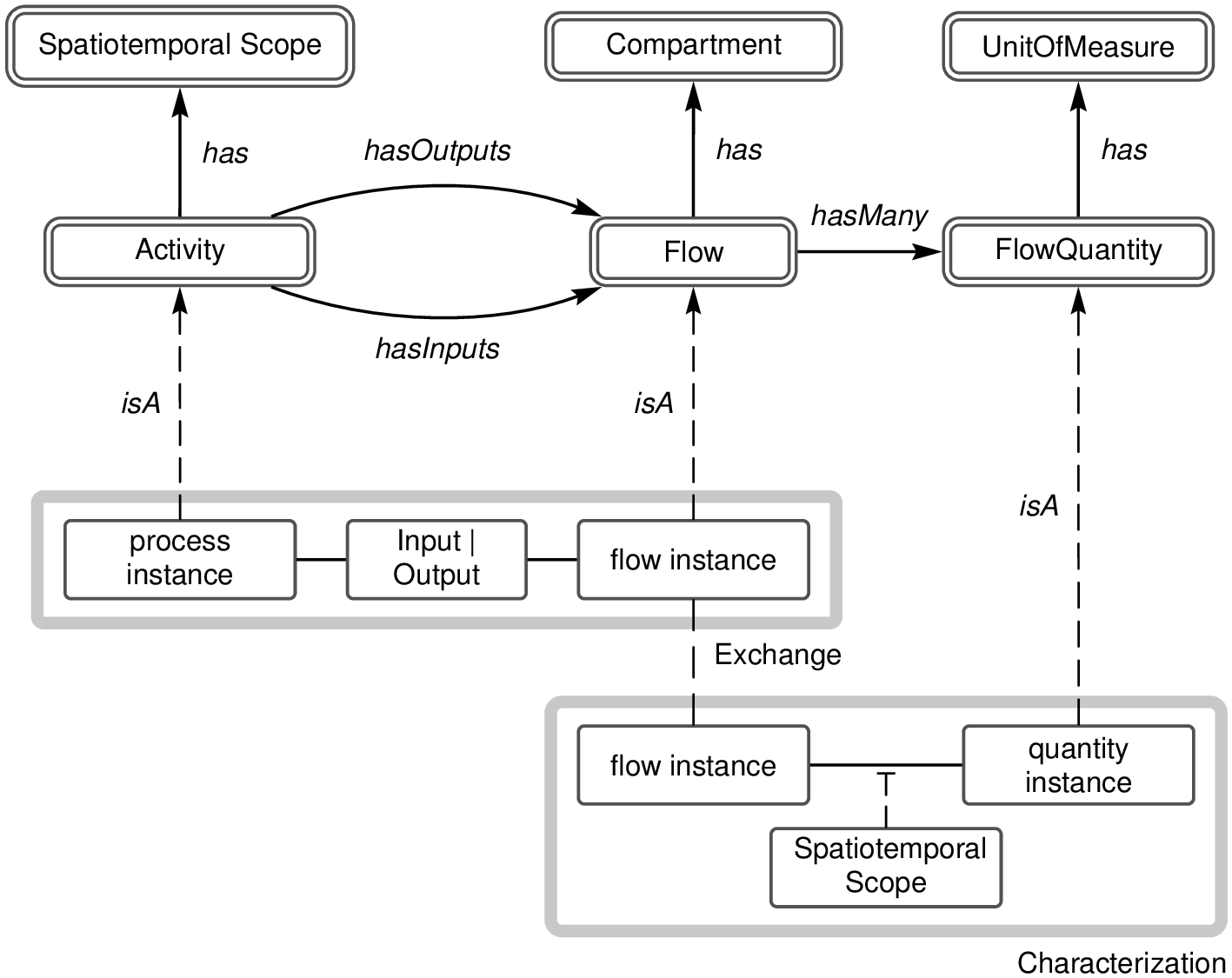Files that describe available LCA data resources
Visit the webpage for more information
This is a repository for storing catalogs of life cycle inventory (LCI) data used for preparing life cycle assessment (LCA) studies. The catalogs are meant to describe the semantic content of the databases, as well as the network structure, without describing the quantitative information. In other words, the catalogs include exchanges but not exchange values.
All the catalogs here are generated from publicly available databases using the lcatools python package (not yet registered anywhere!)
Currently, the catalog includes archives of the following data sources:
- US LCI, via Ecospold v1 archive downloaded from the LCA Commons;
- Ecoinvent v3.2 (four different system models), via the "activity overview" spreadsheets available on the Ecoinvent website;
- Ecoinvent LCIA factors, via the LCIA Implementation spreadsheet available from the ecoinvent Centre;
- GaBi Professional database (2016), via their web-based ILCD archive;
- GaBi 2016 Extensions;
- ELCD 3.2, via their downloadable ILCD archive
- ELCD LCIA factors from the same archive (only includes characterization factors for flows that actually appear as exchanges in ILCD)
Current plans include indexing the 2016 versions of GaBi Professional, GaBi Lean, and all 15-odd extension databases. Others may come soon.
To download the catalogs, either clone this repository or visit the Catalogs page.
The python programming language makes it very easy to work with JSON data. For a simple example of something useful to do, see this notebook.
The data model emphasizes minimality and generality. The unifying characteristic is the following minimal model for LCA, which is an attempt at synthesizing a number of published LCA data models into a common model with the fewest possible parts:
The model has three different entity types: processes, flows, and quantities.
Each entity has four required fields:
- an entity type;
- an id which uniquely identifies the data set within the catalog;
- an origin, which reports the original data source;
- an external id, which uniquely identifies the data set within the original data source.
In addition to those identity fields, each entity includes descriptive fields which contain semantic content, such as Name and Comment. Processes and Flows also contain structural fields which link entities to one another. Processes contain a list of exchanges, which link one process, one flow, and a direction (Input | Output) of the flow with respect to the process. Similarly, flows contain a list of characterizations, each of which is a pairing of a flow with a quantity, optionally including a locale. Both exchanges and characterizations may include numerical exchange values, but they do not have to. Both exchanges and characterizations can be labeled with the isReference property, which establishes that the exchange or characterization listed is the designated reference for that entity.
- a
quantityhas a referenceunit(units are outside the scope of this model) - a
flowhas a referencecharacterization - a
processhas a referenceexchange.
Although Strictly speaking the reference object is supposed to be required, in practice the reference object is allowed to be None/ null / empty.
In addition to the mandatory fields, each entity has an unbounded collection of tags which can be any text-based or numeric content that describes the entity. Processes are required to have
- "Name" (common to all entities)
- "Comment" (common to all entities)
- "SpatialScope" and "TemporalScope" (all
processesin the catalogs have these) - "Compartment" (a hierarchical list; all flows have compartments)
- "CasNumber" (all
flowshave this field, though it may be blank) - "UnitConversion" (some
quantitieshave these)
Entities can also have any other tag. The tags are meant to be fodder for search.
This repository contains archives and catalogs formatted as [[JSON]]. The JSON archivs have the following structure:
Archive = {
"processes" : [ <list of process entities> ],
"flows" : [ <list of flow entities> ],
"quantities": [ <list of quantity entities> ],
"dataSourceReference": "a string describing where the archive comes from",
"dataSourceType": "a string describing the python subclass that created the archive"
}
Meanwhile, the entities themselves are simply defined:
quantities look like this:
quantity = {
"entityId": quantity-identifier,
"entityType": "quantity",
"origin": dataSourceReference,
"externalId": origin-specific identifier,
"Name": "name text...",
"Comment": "...",
"referenceUnit": unit-identifier,
...
}
}
flows look like this:
flow = {
"entityId": flow-identifier,
"entityType": "flow",
"origin": dataSourceReference,
"externalId": origin-specific identifier,
"Name": "name text..."
"Comment": "...",
"CasNumber": "...",
"Compartment": [ "...", "..." ... ],
...
"characterizations": [
{
"entityType": "characterization",
"quantity": quantity-identifier,
...
}
...
]
}
},
processes look like this:
process = {
"entityId": process-identifier
"entityType": "process",
"origin": dataSourceReference,
"externalId": origin-specific identifier,
"Name": "name text..."
"Comment": "...",
"SpatialScope": "spatial text...",
"TemporalScope":
{
"begin": validFrom,
"end": validThrough
},
"exchanges": [
{
"entityType": "exchange",
"flow": flow-identifier,
"direction": "Input" | "Output",
...
}
...
]
}
}
In each case, the identifier listed in one entity's entityId field should match the identifier listed in an
exchange or characterization in which it is referenced.
<direction> is either Input or Output.
Within each archive, the externalId fields should each uniquely identify an entity with respect to the origin value, but interpretation varies depending on the archive type. For instance, if the dataSourceType is an IlcdArchive, then the dataSourceReference points to the root of the archive and the externalId would be things like processes/<uuid> or flowproperties/<uuid>.
On the other hand, if the archive is an EcospoldV1Archive, then processes are identified by name, flows are identified by an internal ID integer, and quantities are just unit strings.
Finally, if the archive is an EcoinventSpreadsheet, then processes are UUIDs; flows are uniquely identified by name if they are intermediate flows, or uniquely identified by name, compartment, and subcompartment if they are elementary flows; and quantities are-- again-- just unit strings.
The internal entityId is always simply a UUID.
